Sentiment Analysis
Sentiment analysis is the process of determining the sentiment of a piece of text, such as a tweet or a review.
Papers and Code
Bayesian Network Fusion of Large Language Models for Sentiment Analysis
Oct 30, 2025Large language models (LLMs) continue to advance, with an increasing number of domain-specific variants tailored for specialised tasks. However, these models often lack transparency and explainability, can be costly to fine-tune, require substantial prompt engineering, yield inconsistent results across domains, and impose significant adverse environmental impact due to their high computational demands. To address these challenges, we propose the Bayesian network LLM fusion (BNLF) framework, which integrates predictions from three LLMs, including FinBERT, RoBERTa, and BERTweet, through a probabilistic mechanism for sentiment analysis. BNLF performs late fusion by modelling the sentiment predictions from multiple LLMs as probabilistic nodes within a Bayesian network. Evaluated across three human-annotated financial corpora with distinct linguistic and contextual characteristics, BNLF demonstrates consistent gains of about six percent in accuracy over the baseline LLMs, underscoring its robustness to dataset variability and the effectiveness of probabilistic fusion for interpretable sentiment classification.
QiNN-QJ: A Quantum-inspired Neural Network with Quantum Jump for Multimodal Sentiment Analysis
Oct 31, 2025Quantum theory provides non-classical principles, such as superposition and entanglement, that inspires promising paradigms in machine learning. However, most existing quantum-inspired fusion models rely solely on unitary or unitary-like transformations to generate quantum entanglement. While theoretically expressive, such approaches often suffer from training instability and limited generalizability. In this work, we propose a Quantum-inspired Neural Network with Quantum Jump (QiNN-QJ) for multimodal entanglement modelling. Each modality is firstly encoded as a quantum pure state, after which a differentiable module simulating the QJ operator transforms the separable product state into the entangled representation. By jointly learning Hamiltonian and Lindblad operators, QiNN-QJ generates controllable cross-modal entanglement among modalities with dissipative dynamics, where structured stochasticity and steady-state attractor properties serve to stabilize training and constrain entanglement shaping. The resulting entangled states are projected onto trainable measurement vectors to produce predictions. In addition to achieving superior performance over the state-of-the-art models on benchmark datasets, including CMU-MOSI, CMU-MOSEI, and CH-SIMS, QiNN-QJ facilitates enhanced post-hoc interpretability through von-Neumann entanglement entropy. This work establishes a principled framework for entangled multimodal fusion and paves the way for quantum-inspired approaches in modelling complex cross-modal correlations.
Effect of Domain Generalization Techniques in Low Resource Systems
Oct 31, 2025Machine learning models typically assume that training and test data follow the same distribution, an assumption that often fails in real-world scenarios due to distribution shifts. This issue is especially pronounced in low-resource settings, where data scarcity and limited domain diversity hinder robust generalization. Domain generalization (DG) approaches address this challenge by learning features that remain invariant across domains, often using causal mechanisms to improve model robustness. In this study, we examine two distinct causal DG techniques in low-resource natural language tasks. First, we investigate a causal data augmentation (CDA) approach that automatically generates counterfactual examples to improve robustness to spurious correlations. We apply this method to sentiment classification on the NaijaSenti Twitter corpus, expanding the training data with semantically equivalent paraphrases to simulate controlled distribution shifts. Second, we explore an invariant causal representation learning (ICRL) approach using the DINER framework, originally proposed for debiasing aspect-based sentiment analysis. We adapt DINER to a multilingual setting. Our findings demonstrate that both approaches enhance robustness to unseen domains: counterfactual data augmentation yields consistent cross-domain accuracy gains in sentiment classification, while causal representation learning with DINER improves out-of-distribution performance in multilingual sentiment analysis, albeit with varying gains across languages.
Enhancing Sentiment Classification with Machine Learning and Combinatorial Fusion
Oct 30, 2025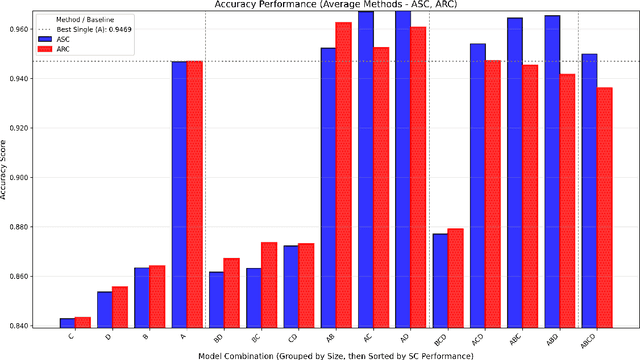
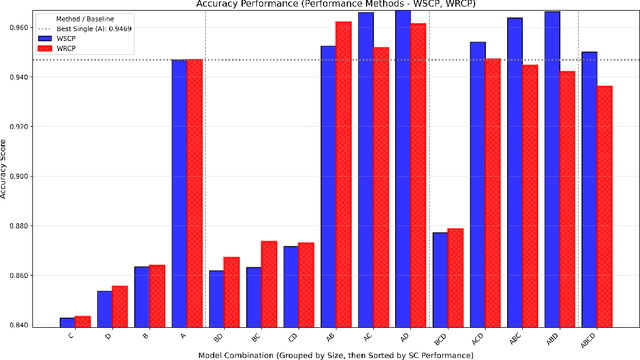
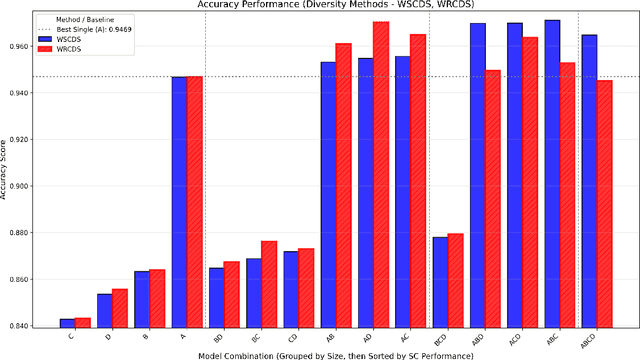
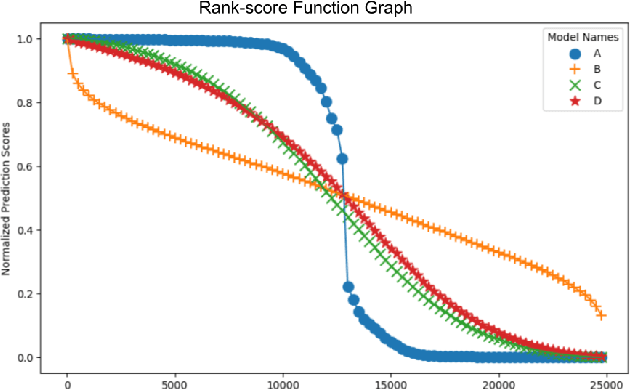
This paper presents a novel approach to sentiment classification using the application of Combinatorial Fusion Analysis (CFA) to integrate an ensemble of diverse machine learning models, achieving state-of-the-art accuracy on the IMDB sentiment analysis dataset of 97.072\%. CFA leverages the concept of cognitive diversity, which utilizes rank-score characteristic functions to quantify the dissimilarity between models and strategically combine their predictions. This is in contrast to the common process of scaling the size of individual models, and thus is comparatively efficient in computing resource use. Experimental results also indicate that CFA outperforms traditional ensemble methods by effectively computing and employing model diversity. The approach in this paper implements the combination of a transformer-based model of the RoBERTa architecture with traditional machine learning models, including Random Forest, SVM, and XGBoost.
How Data Mixing Shapes In-Context Learning: Asymptotic Equivalence for Transformers with MLPs
Oct 29, 2025Pretrained Transformers demonstrate remarkable in-context learning (ICL) capabilities, enabling them to adapt to new tasks from demonstrations without parameter updates. However, theoretical studies often rely on simplified architectures (e.g., omitting MLPs), data models (e.g., linear regression with isotropic inputs), and single-source training, limiting their relevance to realistic settings. In this work, we study ICL in pretrained Transformers with nonlinear MLP heads on nonlinear tasks drawn from multiple data sources with heterogeneous input, task, and noise distributions. We analyze a model where the MLP comprises two layers, with the first layer trained via a single gradient step and the second layer fully optimized. Under high-dimensional asymptotics, we prove that such models are equivalent in ICL error to structured polynomial predictors, leveraging results from the theory of Gaussian universality and orthogonal polynomials. This equivalence reveals that nonlinear MLPs meaningfully enhance ICL performance, particularly on nonlinear tasks, compared to linear baselines. It also enables a precise analysis of data mixing effects: we identify key properties of high-quality data sources (low noise, structured covariances) and show that feature learning emerges only when the task covariance exhibits sufficient structure. These results are validated empirically across various activation functions, model sizes, and data distributions. Finally, we experiment with a real-world scenario involving multilingual sentiment analysis where each language is treated as a different source. Our experimental results for this case exemplify how our findings extend to real-world cases. Overall, our work advances the theoretical foundations of ICL in Transformers and provides actionable insight into the role of architecture and data in ICL.
\textsc{CantoNLU}: A benchmark for Cantonese natural language understanding
Oct 23, 2025Cantonese, although spoken by millions, remains under-resourced due to policy and diglossia. To address this scarcity of evaluation frameworks for Cantonese, we introduce \textsc{\textbf{CantoNLU}}, a benchmark for Cantonese natural language understanding (NLU). This novel benchmark spans seven tasks covering syntax and semantics, including word sense disambiguation, linguistic acceptability judgment, language detection, natural language inference, sentiment analysis, part-of-speech tagging, and dependency parsing. In addition to the benchmark, we provide model baseline performance across a set of models: a Mandarin model without Cantonese training, two Cantonese-adapted models obtained by continual pre-training a Mandarin model on Cantonese text, and a monolingual Cantonese model trained from scratch. Results show that Cantonese-adapted models perform best overall, while monolingual models perform better on syntactic tasks. Mandarin models remain competitive in certain settings, indicating that direct transfer may be sufficient when Cantonese domain data is scarce. We release all datasets, code, and model weights to facilitate future research in Cantonese NLP.
CLiVR: Conversational Learning System in Virtual Reality with AI-Powered Patients
Oct 21, 2025Simulations constitute a fundamental component of medical and nursing education and traditionally employ standardized patients (SP) and high-fidelity manikins to develop clinical reasoning and communication skills. However, these methods require substantial resources, limiting accessibility and scalability. In this study, we introduce CLiVR, a Conversational Learning system in Virtual Reality that integrates large language models (LLMs), speech processing, and 3D avatars to simulate realistic doctor-patient interactions. Developed in Unity and deployed on the Meta Quest 3 platform, CLiVR enables trainees to engage in natural dialogue with virtual patients. Each simulation is dynamically generated from a syndrome-symptom database and enhanced with sentiment analysis to provide feedback on communication tone. Through an expert user study involving medical school faculty (n=13), we assessed usability, realism, and perceived educational impact. Results demonstrated strong user acceptance, high confidence in educational potential, and valuable feedback for improvement. CLiVR offers a scalable, immersive supplement to SP-based training.
PABSA: Hybrid Framework for Persian Aspect-Based Sentiment Analysis
Oct 05, 2025
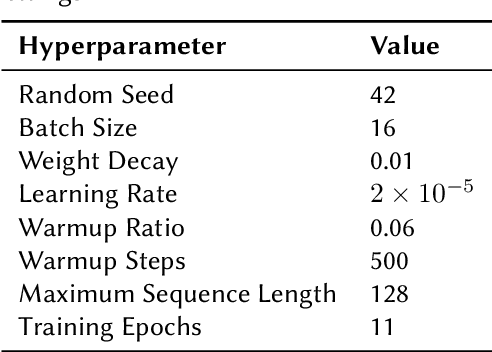

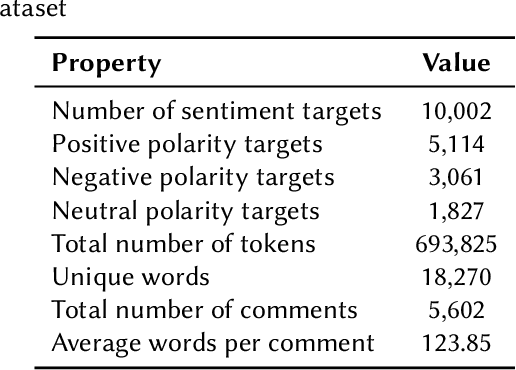
Sentiment analysis is a key task in Natural Language Processing (NLP), enabling the extraction of meaningful insights from user opinions across various domains. However, performing sentiment analysis in Persian remains challenging due to the scarcity of labeled datasets, limited preprocessing tools, and the lack of high-quality embeddings and feature extraction methods. To address these limitations, we propose a hybrid approach that integrates machine learning (ML) and deep learning (DL) techniques for Persian aspect-based sentiment analysis (ABSA). In particular, we utilize polarity scores from multilingual BERT as additional features and incorporate them into a decision tree classifier, achieving an accuracy of 93.34%-surpassing existing benchmarks on the Pars-ABSA dataset. Additionally, we introduce a Persian synonym and entity dictionary, a novel linguistic resource that supports text augmentation through synonym and named entity replacement. Our results demonstrate the effectiveness of hybrid modeling and feature augmentation in advancing sentiment analysis for low-resource languages such as Persian.
An Adaptive Multi Agent Bitcoin Trading System
Oct 09, 2025



This paper presents a Multi Agent Bitcoin Trading system that utilizes Large Lan- guage Models (LLMs) for alpha generation and portfolio management in the cryptocur- rencies market. Unlike equities, cryptocurrencies exhibit extreme volatility and are heavily influenced by rapidly shifting market sentiments and regulatory announcements, making them difficult to model using static regression models or neural networks trained solely on historical data [53]. The proposed framework overcomes this by structuring LLMs into specialised agents for technical analysis, sentiment evaluation, decision-making, and performance reflection. The system improves over time through a novel verbal feedback mechanism where a Reflect agent provides daily and weekly natural-language critiques of trading decisions. These textual evaluations are then injected into future prompts, al- lowing the system to adjust indicator priorities, sentiment weights, and allocation logic without parameter updates or finetuning. Back-testing on Bitcoin price data from July 2024 to April 2025 shows consistent outperformance across market regimes: the Quantita- tive agent delivered over 30% higher returns in bullish phases and 15% overall gains versus buy-and-hold, while the sentiment-driven agent turned sideways markets from a small loss into a gain of over 100%. Adding weekly feedback further improved total performance by 31% and reduced bearish losses by 10%. The results demonstrate that verbal feedback represents a new, scalable, and low-cost method of tuning LLMs for financial goals.
Beyond Simple Fusion: Adaptive Gated Fusion for Robust Multimodal Sentiment Analysis
Oct 02, 2025



Multimodal sentiment analysis (MSA) leverages information fusion from diverse modalities (e.g., text, audio, visual) to enhance sentiment prediction. However, simple fusion techniques often fail to account for variations in modality quality, such as those that are noisy, missing, or semantically conflicting. This oversight leads to suboptimal performance, especially in discerning subtle emotional nuances. To mitigate this limitation, we introduce a simple yet efficient \textbf{A}daptive \textbf{G}ated \textbf{F}usion \textbf{N}etwork that adaptively adjusts feature weights via a dual gate fusion mechanism based on information entropy and modality importance. This mechanism mitigates the influence of noisy modalities and prioritizes informative cues following unimodal encoding and cross-modal interaction. Experiments on CMU-MOSI and CMU-MOSEI show that AGFN significantly outperforms strong baselines in accuracy, effectively discerning subtle emotions with robust performance. Visualization analysis of feature representations demonstrates that AGFN enhances generalization by learning from a broader feature distribution, achieved by reducing the correlation between feature location and prediction error, thereby decreasing reliance on specific locations and creating more robust multimodal feature representations.
 Add to Chrome
Add to Chrome Add to Firefox
Add to Firefox Add to Edge
Add to Edge